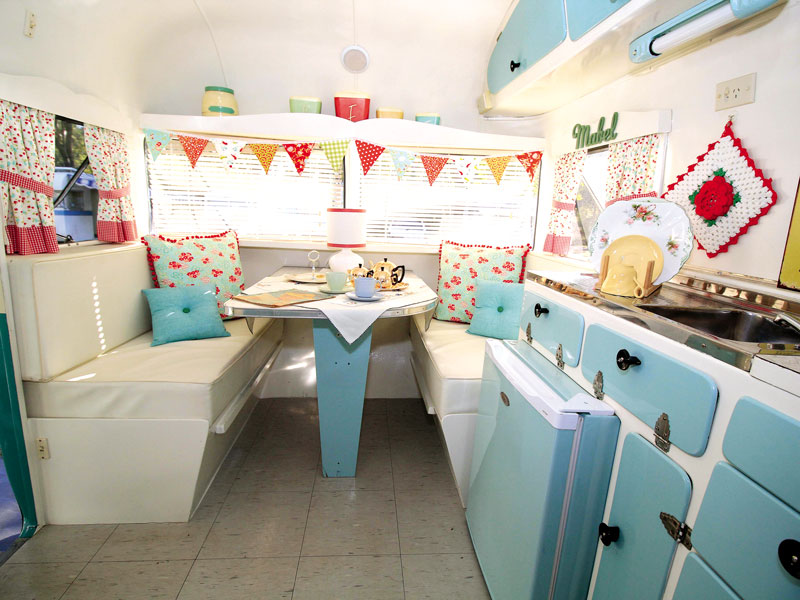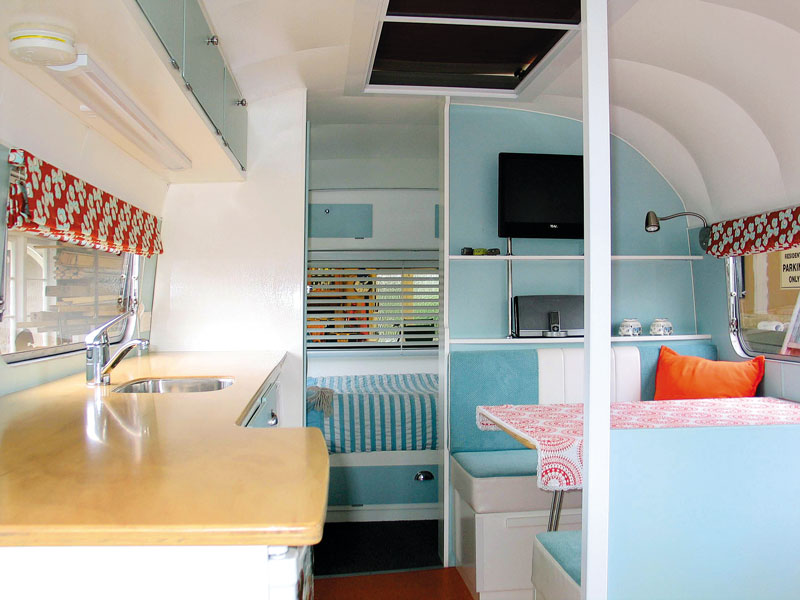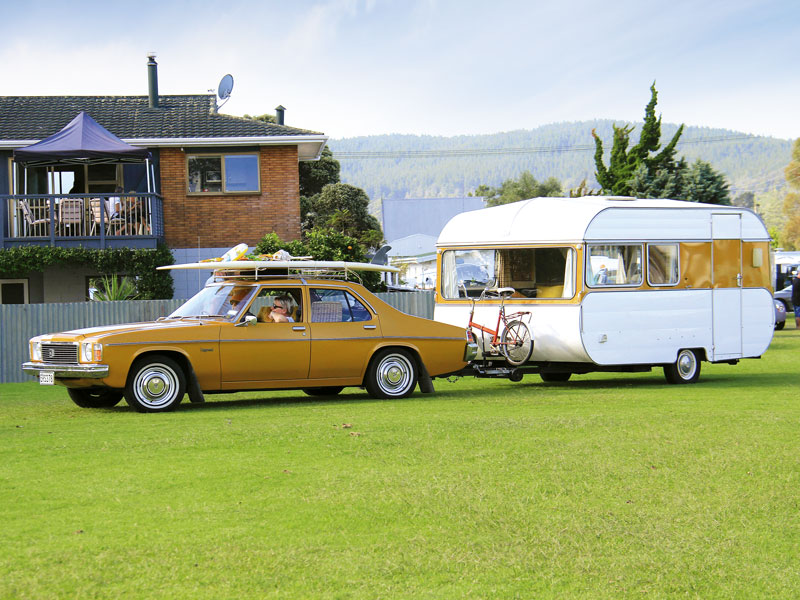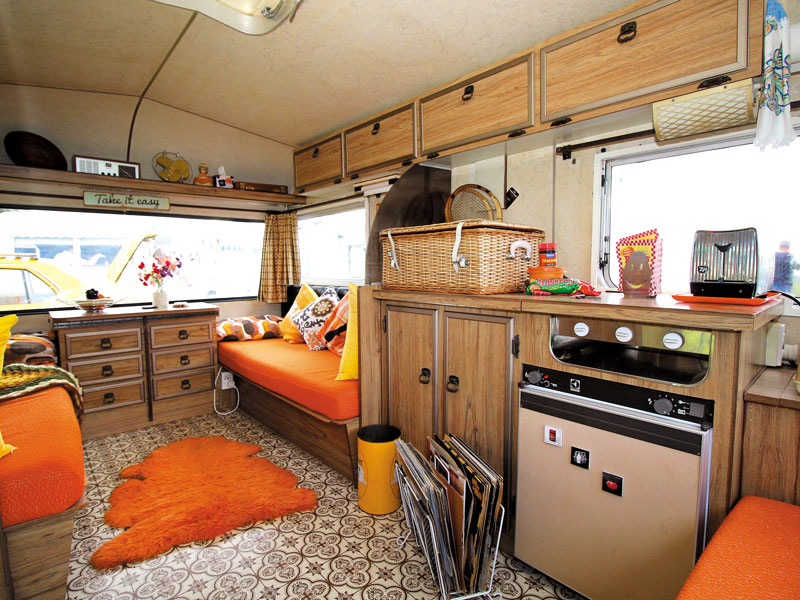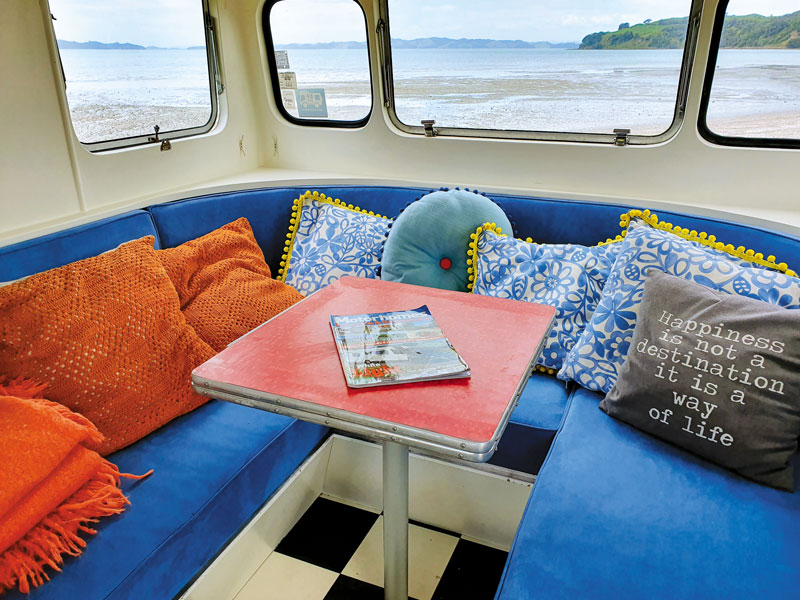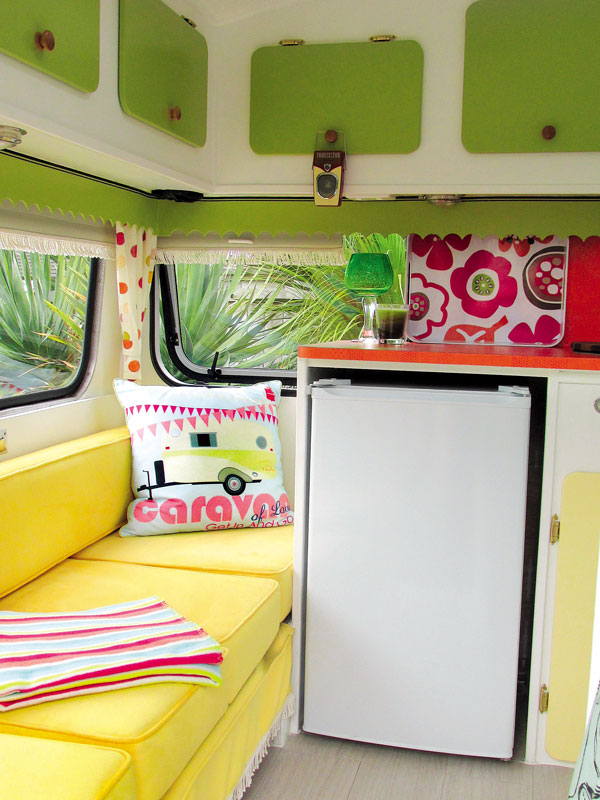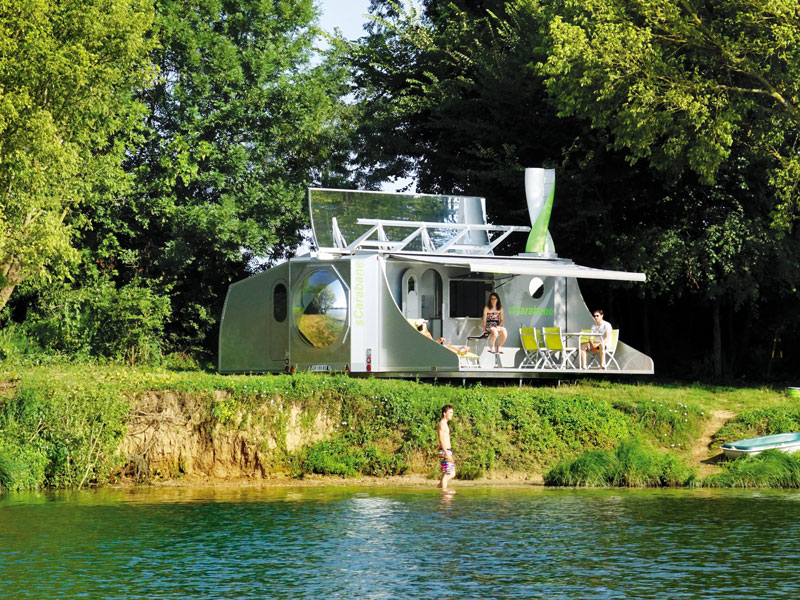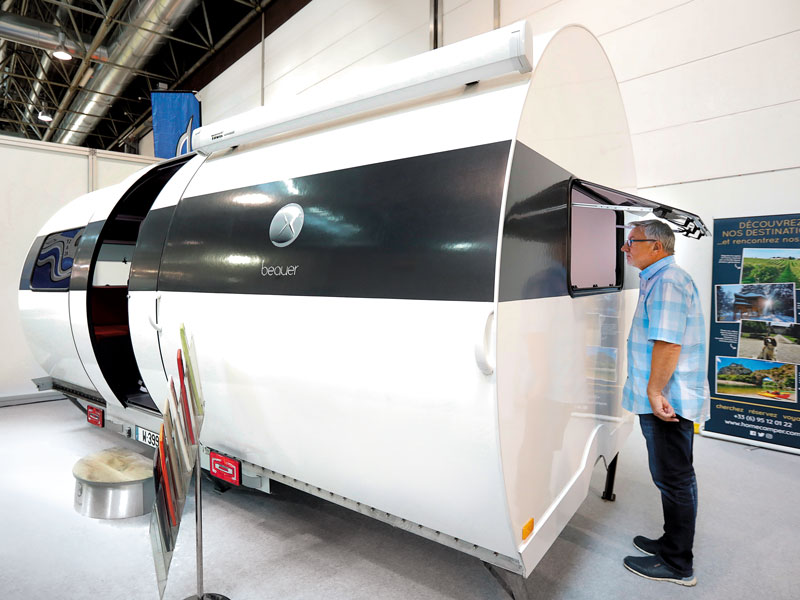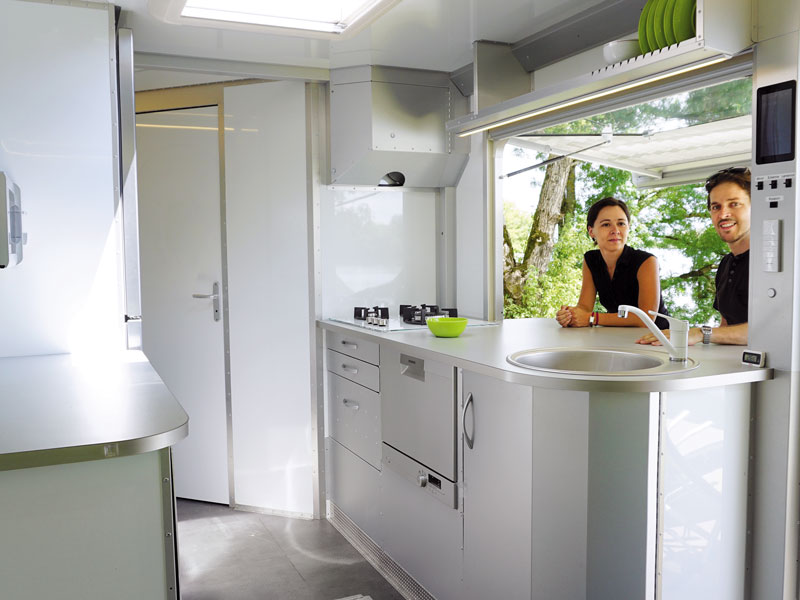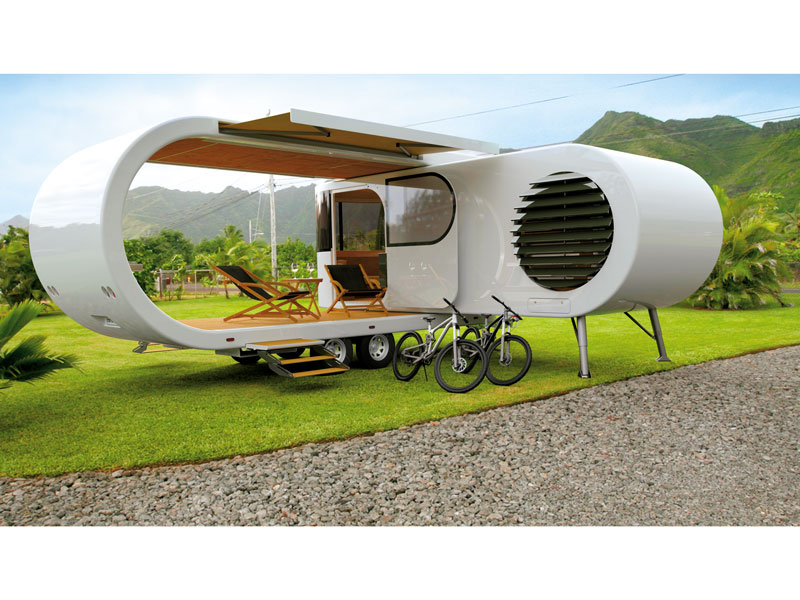When the working parts of a whole house are reduced to a small space, function and layout are everything. That said, even in the earliest commercially manufactured caravans, the home design trends of the day were evident.
1950 to 1959
Caravans in the 1950s were small and bubble-shaped, interiors were pragmatic. Standard layouts were simple and decor confined to fabrics and coverings. A 10-foot caravan typically had two rear single beds down each side that served as bench seats by day and could be converted to a double bed at night using the foldaway table between them. Across the front was a sink bench with a wardrobe in the offside corner.
The bench housed a sink and an aluminium-lined recess to accommodate a methylated spirits cooker. Alternatively, the wardrobe was on the door-side wall and the sink bench opposite. Larger sizes (12- and 14-foot) had room for a separate double dinette, either at the front or back with a single bunk at the opposite end.
Longer, four-berth caravans might have added two bunks, one of which was a lift-up. Of course, there were variations. It was too soon for fridges, but food was cooled by way of a safe vented to the outdoors. Windows were small, set in alloy frames and covered with plain or lace curtains in muted tones.
Painted cabinetry most often had flush-fitting doors and, to avoid the risk of concussion, cupboards above the bench sloped backwards with sliding doors. Linoleum, typically in grey with the odd splash of red, yellow or green, covered the floors, and ‘cracked ice’ Formica tables and benchtops were sometimes edged with a chrome capping.
1960 to 1969
There was a wave of expansion in the 1960s - not just in the number of new caravans hitting the roads but in the square body shapes that were longer and wider. With increased space, layouts could be more varied. Thankfully, cookers now used LPG, which was safer. Windows increased in size. Venetians or soft-coloured roller blinds began to appear, and benchtops were commonly covered in ‘stardust’ Formica (white- or pale-coloured and flecked with stars).
Later the plywood furniture gave way to bonded Formica in woodgrain patterns. Floors were pale-coloured and vinyl sheeting replaced linoleum. In contrast to the 1950s, soft furnishings introduced clear, bright colours, such as bold pinks, yellows and greens.
1970 to 1979
Then came the big boom times of the 1970s. Caravan sizes increased again and innovative new shapes appeared. The levels of luxury and modernisation increased dramatically. Many vans had hot and cold water, electric heaters, full fridges and a few even had showers and toilets. Stoves sported grilling ovens, island beds were introduced.
Light poured in through windows that had increased in size. Dark pre-printed finishes adorned cupboard doors in various woodgrain patterns and walls were of pale-coloured, pre-finished plywood. Fabrics followed the home decor trend of autumnal colours - browns, oranges, bright greens and mustard hues with bold geometric or floral patterns.
In 1998, my husband Bill and I joined the vintage set with an 18-foot Anglo Astral (circa 1975). It wasn’t a thing of great beauty. Its shape was a bit like an over-risen loaf of bread, and running down either flank was a broad stripe the colour of weak tea. It was reasonably roomy inside, with a small table that could be extended.
Down one wall was a bench seat, the squabs covered in hardy, beige-coloured fabric and, on the opposite side of the table, was a smaller seat. On the off-side wall was a skinny wardrobe, and a double bed spread across the caravan against the back window. The bench was L-shaped and covered in mottled, mustard-coloured Formica.
Set into this was a sink that was so small you could hardly dunk a doughnut in it. We cooked on a two-burner LPG cooker and the sink water flowed by means of a foot pump.
The windows were covered by tieback lace curtains and roller blinds with scalloped fringes.
The carpet was a ghastly chocolate brown and the cushions and decorative touches a kind of lolly pink. Set into a small divide between the bench and the wardrobe in a panel in the door was the rippled, beer-bottle glass fashionable in the 1970s.
Two interesting things about these very early brands are their enduring appeal and in recent years, their remarkable re-invention. Old New Zealand-built caravans are de rigueur with aficionados of nostalgia. Rescued from their graveyards, many disintegrating carcasses have been reincarnated and painstakingly restored.
Most of these delightful old brands - Lightweight, Anglo, Tanner, Gypsy, Oxford Lilliput, CI Munro and others - have been retro-fitted to retain the character of the era in which they were constructed, but remodelled with modern materials and decor and added mod cons. Others have remained vintage and are faithfully restored to the original specifications.
1979 to 1990
Through the 1970s, caravan manufacturing in New Zealand was in full swing. New ideas were flourishing. And then, in May 1979, disaster struck. Without warning, the Muldoon government slapped a 20 per cent sales tax on new caravan sales that all but destroyed the manufacturing industry overnight.
It never recovered. From 1970 to 1979 there were 40,000 new caravans built; from 1979 to 1990 a mere 8000. The few companies that struggled through the 1980s made significant changes to keep afloat, introducing new shapes, extenders and pop-tops. Windows expanded even more. Woodgrain finishes became lighter and fabrics came in strong, plain colours.
One company that survived the downturn and went on to become New Zealand’s most significant caravan manufacturer is Leisure Line. The company began manufacturing caravans in 1973.
It took the best features from existing New Zealand-built caravans and, over the years, has produced a recognisable product style that reflects its origins. Leisure Line’s systematic interiors are notable for their refined detailing and sophisticated colour schemes.
1990 to 2020
During the struggles of the 1980s, more nails in the industry’s coffin began to arrive in the form of new and used imports from Australia, England and Europe, bringing with them living spaces that were often every bit as modern as their elegant outer shells. By 1990, most of the large New Zealand caravan manufacturers had closed.
Dealers traded in second-hand stock to stay afloat. It remained this way until 1999 to 2000 when, unable to source suitable second-hand caravans, dealers started importing. At this stage, it is best to roll forward to the present day because, along with new technology and materials, the changes in caravan interiors have been radical and rapid.
It’s all been a bit of a blur. Perhaps the most apparent elements were the advent of curved cupboard doors and in general, lines and shapes that were sleek and elegant. Today, colours are tone-on-tone in muted earth colours with upholstery in plain-coloured fabrics, vinyl or leather.
Pop your head inside a new-model caravan, and it might look like something out of Vogue Living. Designers have brought us a bewildering array of impressive possibilities in layout and aesthetics: innerspring or foam mattresses; bedrooms divided from living areas; stylish kitchens equipped like modern homes with soft-closing drawers, full-sized ovens, pantries, extractor fans, range hoods and full-sized fridge/freezers.
Lounge/dining areas are comfortably cushioned and roomy. Bathrooms make the most of smaller spaces with natty design innovations that divide showers from toilets and basins and have elegant fittings and ingeniously designed cupboard spaces.
Plain-coloured laminate or simulated stone is used for benchtops. Joinery is laminated in plain white or woodgrain and flooring looks like planking. At night, LED lighting systems turn interiors into fun parks. Window coverings incorporate separate pull-down blinds and insect screens, and curtaining is plain or lightly patterned in autumnal tones.
It is evident that as the popularity of caravanning rises, imaginative developments are continuing. But looking too far into the future is often hard on the imagination. Currently, concepts for futuristic designs are almost in the realm of science fiction - as far removed from the caravans we know as horse and buggies are from space rockets.
Take, for example, the sCarabane prototype. What starts off looking like a tiny home on wheels unfurls itself into something of an ultra-modern mini-bach, with a large outdoor deck, two decent-sized bedrooms, a central living area, mini bar, and six-person dining. But most impressive of all, it rotates 360 degrees so you can follow the sun.
And it takes going off-grid to a whole new level with some impressive green technology - including a solar-harvesting roof and a wind turbine that generates electricity. And on show at last year’s Caravan Salon in Dusseldorf was the Beauer 3X. At the push of a button, the 4m sphere extends out to 12sqm.
There’s even a ‘luxury’ version that offers 28m of living space. But that’s just the beginning. Imagine a caravan shaped like a large beetle, a lemon pip or a dune buggy. How about a camper trailer that opens like a concertina or one with a canvas top that resembles the Sydney Opera House?
I’ve found computer-generated prototypes of a caravan that is shaped like a paper clip wrapped around a structure that swings out into a covered patio. Another is hinged in the middle like a walnut with two halves that open and expose the interior to the elements.
These brain-curdling shapes and streamlined aerodynamics will dictate interior design but at this stage, what we’ll be seeing inside the caravans of the next generation is anybody’s guess. Many of these concepts seem unlikely to see the light of day, and yet so once did Leonardo da Vinci’s sketches of a helicopter.
In part 2, we take a look back at the history of motorhomes and how technology, fashion, and travel habits have dictated changes in their interior design over the years.
Find motorhomes, caravans and RVs for sale in NZ 


